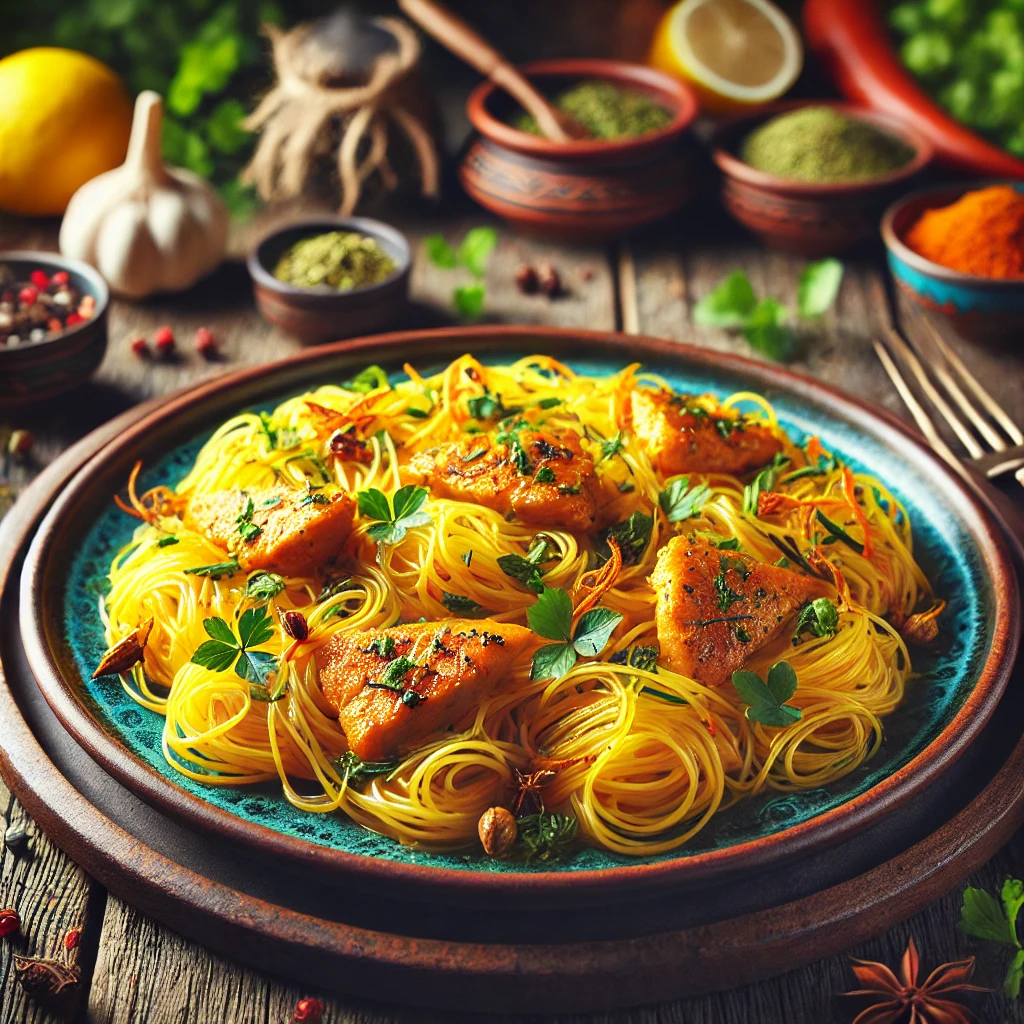




Vermicelli (pronounced "verm-uh-CHELL-ee") is a type of long, thin pasta that originated in southern Italy and is popular in various cuisines worldwide. While vermicelli is thicker than spaghetti in Italy, in the U.S., it's actually thinner than spaghetti.
Made from durum wheat semolina and eggs, vermicelli gets its name from the Italian word vermi, meaning "worms," translating to "little worms." It's mostly available dried but can also be found fresh. Fresh vermicelli typically includes egg, whereas the dried variety may not always contain it.
Vermicelli is classified as extruded pasta, meaning its dough is pressed through a die to create its shape. In Italy, vermi-celli is traditionally thicker than spaghetti (up to 2.3 millimeters thick). However, in the U.S., vermi-celli is less than 0.06 inches (1.5 millimeters) in diameter, making it thinner than American-style spaghetti.
In the U.S., vermi-celli is essentially a thinner version of spaghetti, so it pairs well with light sauces, like simple tomato sauce or oil-based sauces such as garlic and olive oil. Generally, the thinner the pasta, the lighter the sauce should be.
In the U.S., vermi-celli is sometimes compared to angel hair pasta (capellini). Both are made from durum wheat, but angel hair is significantly thinner and cooks much faster. Vermi-celli is more closely related to spaghetti or spaghettini than to capellini.
To cook vermi-celli, simmer it in salted water until it reaches the al dente texture, which may take as little as five minutes due to its thinness. Contrary to popular belief, adding oil to the cooking water does not prevent sticking. Instead, cook the pasta in a large pot with plenty of boiling water, allowing movement and starch dilution to avoid clumping. After cooking, toss the pasta directly in a pan of sauce to enhance flavor and prevent sticking. If serving with an oil-based sauce, avoid tossing the pasta in olive oil beforehand to ensure the sauce is absorbed rather than sliding off.
Although an Italian word, vermi-celli encompasses similar thin, strand-like noodles across various global cuisines. For example:
Spaghetti, spaghettini (thin spaghetti), and fedelini are good substitutes for vermi-celli, although fedelini may not be widely available.
Vermi-celli can be found in a variety of dishes across different cuisines, such as: